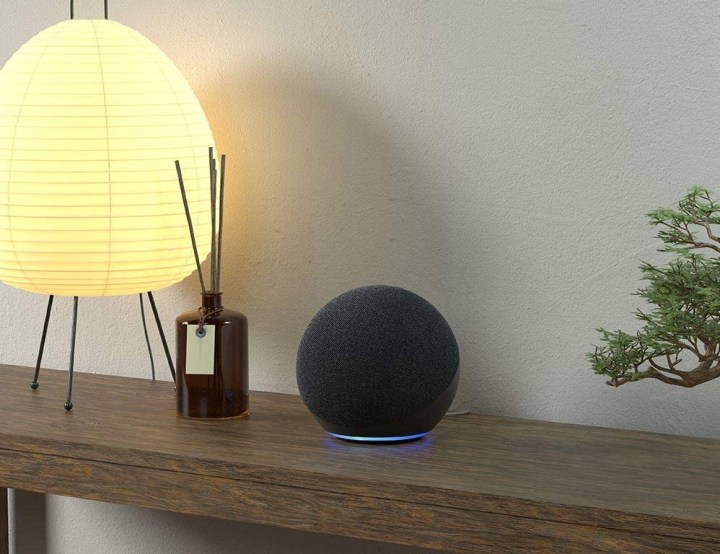Smart products are everywhere you look these days. Wander the aisles of any brick-and-mortar (or online) retailer and you’ll probably see numerous smart devices designed to make living your best life easier. These are products like smart lights, thermostats, door locks, security cameras, and a host of other web-connected automation tech.
While there are plenty of smart home devices to choose from, the reality is that no two items are created equal. This is perhaps most notable when it comes time to download the 18th companion app on your phone to control whatever new gadget you’ve purchased. If only there were a way to manage and control all of our smart home devices under one roof. Spoiler alert: There is.
What you’re looking for is a device called a smart home hub. Engineered to pair up with the smart home devices you’ve got at home, smart hubs help to consolidate the operation of all your Internet-of-Things equipment. But like the products they’re designed to control, no two smart hubs are created equal either.
That’s where we come in. In this guide, we’ll cover all the basics of how smart home hubs work to help you decide whether you should buy one.
What is a smart home hub?

A smart home hub acts as a central command center for all of the smart components you have in your home. Yes, your Amazon Echo speaker or Google Nest Hub smart display can be used to manage and control a number of smart devices on your Wi-Fi network — but when it comes time to integrate hardware that doesn’t utilize Wi-Fi or Bluetooth as the wireless protocol, compatibility becomes an issue.
You see, there are all different kinds of wireless protocols out there. Some you may have heard of (besides Wi-Fi and Bluetooth) are Zigbee, Z-Wave, and SmartThings. Antennas and other receptors are built into your smart devices, with many items packaged with a first-party transmitter that typically connects for power and usually lines into your home’s router. When the transmitter is live, it broadcasts the exact protocol your smart device needs to operate.
When you have a ton of smart devices at one residence — with many of them requiring their own apps and utilizing different wireless protocols — it’s easy to see how running everything all at once can become complicated.
The idea behind a smart home hub is to give you one main peripheral that will allow you to control as many of your smart devices as possible — regardless of protocols and other hardware restrictions.
How do you know which smart home hub to buy?
These days, smart home hubs are actually becoming less popular. This is because smart device makers like Amazon, Google, Apple, and a host of other top brands are designing many of their smart speakers and displays to be compatible with more than just Wi-Fi. For instance, Amazon’s Echo Show 10 and fourth-gen Echo can interface with Wi-Fi, Bluetooth, and Zigbee.
Still, the luxury of being able to control all of your devices using a single app — one of the major calling cards of a dedicated smart hub — is hard to pass up. So how does one even know which hubs to look for?
A good place to start is to ask yourself what smart devices you already own and what products you may want to invest in down the line. Then, you’ll want to figure out what wireless protocols these peripherals use to get online. While a worthwhile smart hub will be able to interface with several different protocols at once, some are better at handling one class of protocols than others.
For instance, the Echo Show 10 is awesome for Wi-Fi, Bluetooth, and Zigbee, but you’ll be hard-pressed to get it to control Z-Wave equipment. And what if you have tons of Z-Wave-powered gear? Well, that’s where a hub like the Wink Hub 2 would be a much better fit. One of the most diverse hubs on the market, the Wink Hub 2 can interface with Zigbee, Z-Wave, Wi-Fi, Bluetooth Low Energy (BLE), and other wireless protocols.
What are the best smart home hubs?
Depending on what smart devices you own, which ones you aim to purchase in the future, and what kinds of capabilities you’re looking for from your smart ecosystem, one smart hub may be better than another. As experts on smart home hubs, though, we know that there are a few hubs that stand above the rest.

Amazon Echo (4th Gen) or Echo Show 10
Alexa, Amazon’s much-publicized voice assistant and smart home controller, is the brains behind the operation of Amazon’s lineup of Echo smart speakers and displays. While most Alexa-powered Echo products can control a number of smart home devices through Wi-Fi and Bluetooth, Alexa itself is not a smart home hub.
Confusing? Think of Alexa as more of a glorified feature of your Amazon smart speaker or display. And built into this big voice assistant feature are little sub-features like reading your daily schedule, answering your questions, and shaking hands with the web-connected smart tech in your house.
Now, the Amazon Echo (4th Gen) speaker and the Echo Show 10 can actually be considered smart home hubs, and good ones, too. This is because both products are compatible with Wi-Fi, Bluetooth, Zigbee, and Amazon Sidewalk (Amazon’s ambitious stab at community networking), which means you’ll be able to handle several protocols using just the Alexa app.
Not only do these Echo offerings support a number of protocols but thanks to Alexa and other add-ons, they’re excellent smart products packed with plenty of entertaining and useful features, such as music streaming, games, Drop In calls, and more.
Samsung SmartThings Hub

The Samsung SmartThings Hub (now in its third generation) is one of the most diverse smart home hubs on the market. Once powered, this tiny white box can do a number of amazing things for your smart home.
For starters, the SmartThings hub features support for Wi-Fi, Bluetooth, Zigbee, and Z-Wave protocols, making it compatible with a number of today’s leading smart products. The SmartThings app itself is also an excellent tool, allowing you to create automation schedules, build custom scenes for products, and more. There’s also onboard support for both Alexa and Google Assistant.
The only trouble with the SmartThings Hub is actually getting your hands on one, since Samsung has discontinued the product. At the time of this article’s publication though, you can currently buy both the second- and third-generation SmartThings hubs on Amazon — although the latter is quite expensive.
The good news is that it looks like Samsung is jumping back on the hub-wagon with the unveiling of the Samsung Home Hub at CES 2022. While we’re not exactly sure what protocols this tablet will handle, we’re certainly excited to learn more about it as its release draws closer.
Wink Hub 2

The Wink Hub 2 is a heavy-hitter when it comes to tackling wireless protocols. This monster of a hub can handle Wi-Fi, Bluetooth Low Energy, Z-Wave, Zigbee, Kidde (for products like Kidde smoke alarms), and Lutron Clear Connect.
In addition to Alexa and If This Then That (IFTTT) support, the hub is also compatible with over 400 different smart brands including Nest, Philips, Ring, Ecobee, Sonos, and more. And with the Wink app, all of your device controls are easily housed under one roof, allowing you to create quick commands for things like toggling lights on and off and locking and unlocking doors.
Do keep in mind that you’ll need to pay a $5 monthly charge for a Wink subscription. Yes, this is required to use any of the hub’s features, which may be a drawback for some buyers.
Want more suggestions for what smart hub brands are best? Check out our roundup of the best smart home hubs you can buy right now.
Should you buy multiple smart home hubs?
In most cases, a single smart home hub should be able to tackle all the different protocols and features you require from it. That being said, there may be other cases where the hub you’ve purchased handles a majority of your needs, but not all of them. Maybe it isn’t compatible with Z-Wave, or perhaps you’re looking for Alexa support but your main hub doesn’t offer it.
In these situations, you can certainly purchase a second hub to handle whatever missing features your first hub has. Just keep in mind that you may be adding in a whole mess of interference that your smart home doesn’t need.
Remember when we talked about wireless transmitters and receivers? Adding a second hub is basically adding in a whole other batch of transmitters that your home will have to contend with. So while Hub B may allow you to control that precious thermostat using Z-Wave, it still emits Wi-Fi, Bluetooth, and Zigbee signals — just like your Z-Wave-less Hub A.
Editors' Recommendations
- This is the best smart accessory you didn’t know you needed
- The best smart light switch for Alexa, Google Home, and HomeKit
- The 5 best smart smoke detectors for your home in 2024
- Forget an air fryer: What you really need is smart indoor smoker
- The best smart blinds for Google Home, Alexa, and HomeKit




